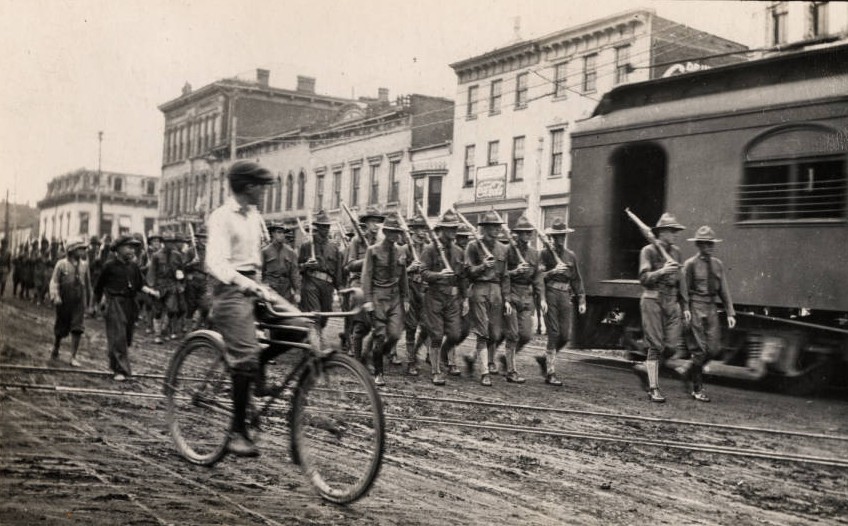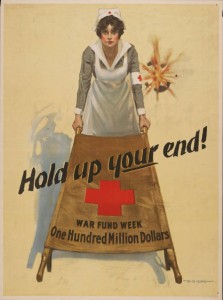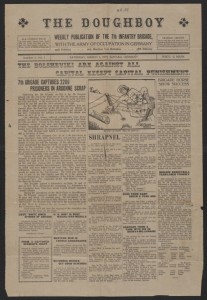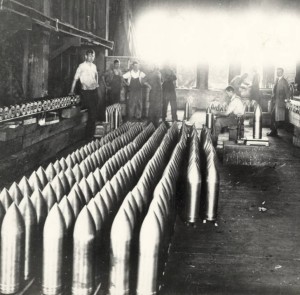Little Stories of the Great War: Ohioans in World War I


The Digital Services staff of the Ohio History Connection are proud to announce that we are the recipients of a recent grant from the National Endowment for the Humanities (NEH) for a project entitled “Little Stories of the Great War: Ohioans in World War I,” which commenced on May 1. This project falls under the category of Humanities Collections and Reference Resources, which includes efforts by institutions to “preserve and provide access to collections essential to scholarship, education, and public programming in the humanities.” It also lends itself to NEH’s Standing Together initiative, which seeks to “promote understanding of the military experience and to support returning veterans.”
The year-long planning grant is meant to prepare for a larger project that would construct a statewide digital collection of World War I (WWI) materials from both the Ohio History Connection and other cultural heritage institutions around the state, designed to align with the centennial of U.S. involvement in the Great War, 1917-1919. Over the course of the coming year, project staff will convene an advisory board composed of historians, educators and curriculum coordinators to lend their expertise in identifying the most appropriate materials for digitization, and planning for the creation of a collection (and associated learning resources) that will prove a valuable resource for scholars, students and the general public. Surveys will be administered to collecting institutions in Ohio to identify their unique WWI materials, as well as to Ohio educators to learn more about how they plan to teach the topic of World War I and what digital resources will best support their curriculum.

By May 2016, project outcomes will include a prototype collection of a preliminary selection of WWI materials from the Ohio History Connection and a yet-to-be-identified partner organization, as well as a publicly-available union bibliography which offers a complete listing of WWI holdings within our collections and other institutions throughout the state. This latter resource will serve as an access point for researchers to identify and locate relevant WWI collections, making these materials known beyond the walls of their holding institutions.
Materials at the Ohio History Connection capture the overarching narrative of WWI, from ordinary stories to extraordinary ones. These collections, diverse in both format and content, represent a variety of Ohio voices from before, during and immediately after the war. Among our vast holdings, users can discover: over 85 photograph collections depicting soldiers, civilians and their environments; over 62 collections containing correspondence, diaries and journals illustrating experiences of soldiers and activities on the home front; over 750 items related to wartime advertisements and propaganda (a new phenomenon of WWI); and over 350 historical artifacts such as uniforms, weaponry and service medals and decorations.

By the end of the war, Ohio had sent approximately 263,000 men and women into service, whether they were national guardsman, volunteers or draftees. This constituted an impressive 5.3% of the nation’s military manpower, fourth only to the contributions of New York, Pennsylvania, and Illinois. In addition to contributing thousands of men and women to fight in the war, Ohio was also the site of Camp Sherman, one of 32 training camps used in WWI and the third largest in the nation, constructed just outside Chillicothe. Over 120,000 soldiers, largely from Ohio, Pennsylvania, Indiana and Tennessee, were trained at the facility, which began receiving recruits in September 1917.
Ohio Memory already has an available selection of images and documents related to the Great War, including materials from abroad, from the homefront, and from Camp Sherman. We invite you to view the press release for the NEH grant program as well as a full list of funded projects by state, and to stay tuned over the coming year as we share the progress of “Little Stories of the Great War.”
Thanks to Lily Birkhimer, Digital Projects Coordinator at the Ohio History Connection, for this weeks post!



Leave a Reply
You must be logged in to post a comment.